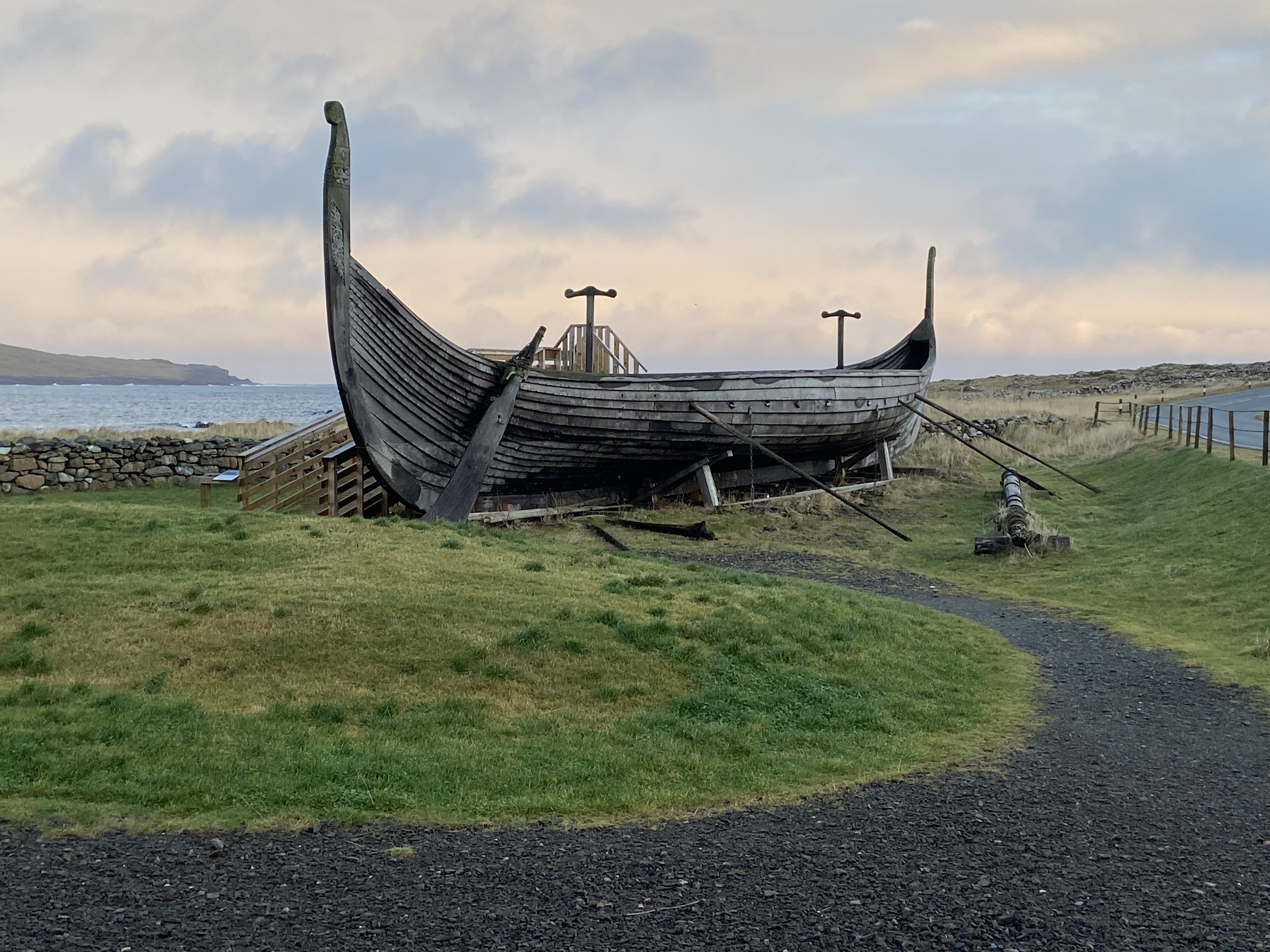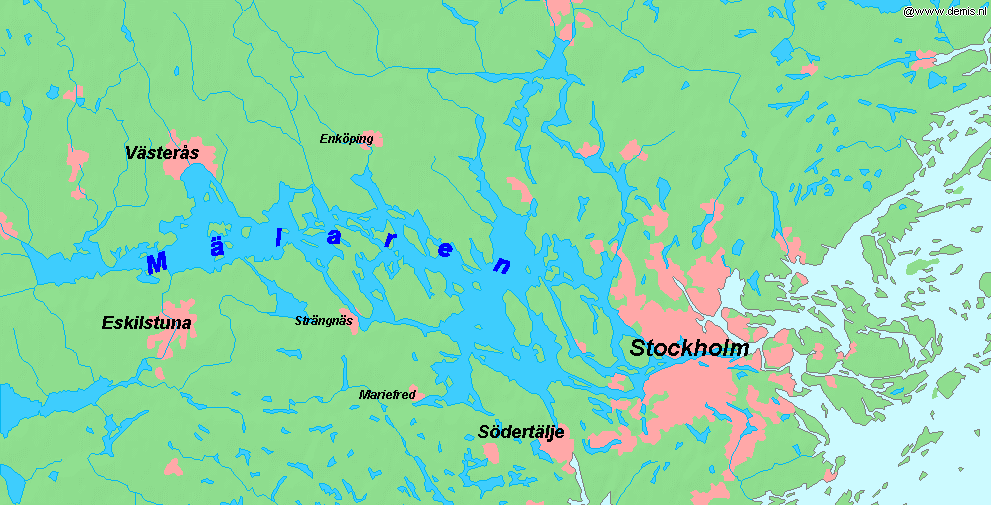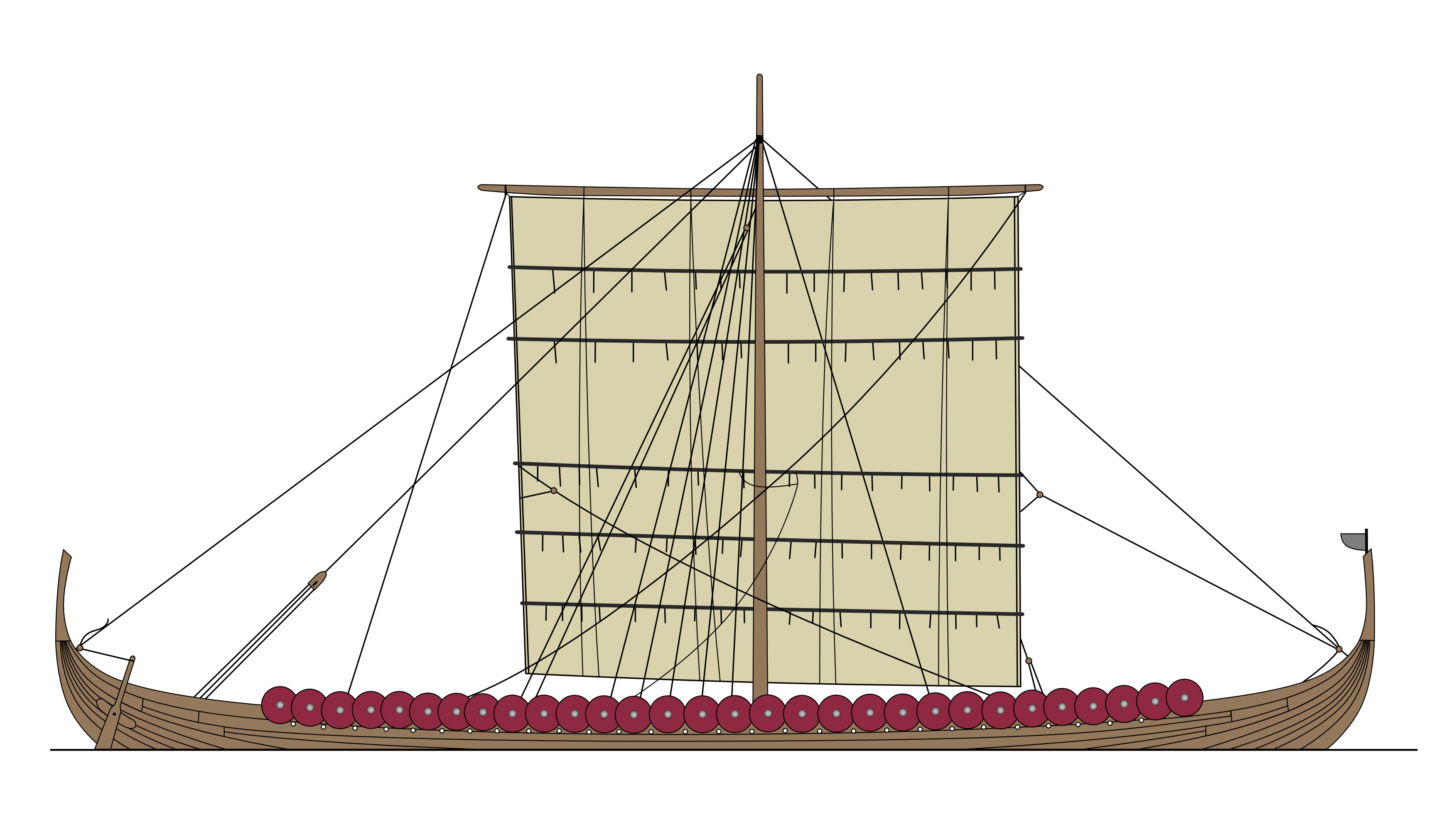|
Haki
Haki, Hake (Old Norse: ), Haco or Aki, the brother of Hagbard, was a famous Scandinavian sea-king, in Norse mythology. He is mentioned in the 12th century ''Gesta Danorum'' and '' Chronicon Lethrense'', and in 13th-century sources including ''Ynglinga saga'', ''Nafnaþulur'', and the ''Völsunga saga''. If historical, he would have lived in the 5th century. ''Ynglinga saga'' Snorri Sturluson wrote in the ''Ynglinga saga'' that Haki had amassed a great force of warriors and sometimes plundered together with his brother Hagbard (who himself was the hero of one of the most popular legends of ancient Scandinavia, see Hagbard and Signy). When Haki considered that he had amassed enough wealth and followers to make himself the king of Sweden, he proceeded with his army against the Swedish royal seat at Uppsala. Haki was a brutal warrior and he had twelve champions, among whom was the legendary warrior Starkad the Old. The Swedish king Hugleik had also gathered a large army and was su ... [...More Info...] [...Related Items...] OR: [Wikipedia] [Google] [Baidu] |
Hugleik
According to the ''Ynglinga saga'', Hugleik or Ochilaik was a Swedish king of the House of Yngling. He was the son of Alf and Bera. Some commentators have identified Hugleik with the Geatish king Hygelac. However, although both kings were killed in battle, Chlochilaicus/Hygelac was reportedly killed near the coast of France/Frisia, while Hugleik was allegedly killed at Fyrisvellir in Sweden. When Hugleik's father and uncle had killed each other, Hugleik inherited the Swedish throne. Like his father, he was not a warrior, but preferred to stay at home. He was reputed to be as greedy as he was rich and, he preferred to be in the company of jesters, seidmen and völvas who entertained him. Haki and Hagbard (the hero of the legend of Hagbard and Signy) were two famous sea-kings who had amassed a great force of warriors, and they occasionally plundered together. Haki arrived in Sweden with his troops to assault Uppsala. Haki was a murderous fighter and around himself he had his ... [...More Info...] [...Related Items...] OR: [Wikipedia] [Google] [Baidu] |
Jorund
Jorund or Jörundr (5th century) was a Swedish king of the House of Yngling. He was the son of Yngvi, and he had reclaimed the throne of Sweden for his dynasty from Haki (the brother of Hagbard, the hero of the legend of Hagbard and Signy. Snorri cites two kennings from this legend, ''Sigar's steed'' and ''Hagard's fell noose'', when telling of Jorund). Snorri Sturluson relates that when Jorund was young he used to travel the seas and plunder with his brother Erik, and they were great warriors. One summer they plundered in Denmark where they met another pillager, King Gudlög of Hålogaland (a province in Norway) with whom they fought. They took him prisoner and carried him ashore at Stromones where they hanged him. Gudlaug's surviving companions raised a mound over him there. Snorri then cites the poem ''Háleygjatal'' by a Norwegian skald named Eyvindr skáldaspillir: This act rendered the Swedish princes, Eric and Jorund, even more famous and they were thought of as even ... [...More Info...] [...Related Items...] OR: [Wikipedia] [Google] [Baidu] |
Hagbard And Signy
Hagbard and Signe (Signy) (the Viking Age) or Habor and Sign(h)ild (the Middle Ages and later) were a pair of lovers in Scandinavian mythology and folklore whose legend was widely popular. The heroes' connections with other legendary characters place the events in the 5th century AD. Hagbard and his brother Haki were famous sea-kings (see Haki for his battles over the throne of Sweden). Like the name Hagbard (''Hagbarðr''), the legend is believed to have continental Germanic origins.Peterson, Lena. (2002). ''Nordiskt runnamnslexikon'', at ''Institutet för språk och folkminnen'', Sweden. Storyline During the centuries of popularity the story changed. This is the most comprehensive version from ''Gesta Danorum'' (book 7) ...[...More Info...] [...Related Items...] OR: [Wikipedia] [Google] [Baidu] |
Hagbard
Hagbard ( ), the brother of Haki and son of Hamund, was a famous Scandinavian sea-king in Norse mythology. He is mentioned in ''Skáldskaparmál'', ''Ynglinga saga'', ''Nafnaþulur'', ''Völsunga saga'' and ''Gesta Danorum''. The heroes' connections with other legendary characters place the events in the 5th century AD. Hagbard remained well-known until recent times in the legend of Hagbard and Signy. This famous legend tells that Hagbard fell in love with Signy, the daughter of king Sigar, the nephew of king Siggeir (of the Völsunga saga), a love affair which ended in their deaths, when Sigar wanted to have Hagbard hanged. This legend is told most fully in ''Gesta Danorum'' (book 7). However, most legends surrounding Hagbard are probably lost. In the ''Völsunga saga'', Gudrun and Brynhild have a discussion on the "greatest of men" referring to a legend now lost, where Hagbard is mentioned together with Haki's sons, who have not yet avenged their sisters by killing the evil Si ... [...More Info...] [...Related Items...] OR: [Wikipedia] [Google] [Baidu] |
Sigar
The name Sigar can refer to four people in Scandinavian mythology, surrounding the legends of Sigurd the dragon slayer. One of them only appears as the friend of Helgi Hjörvarðsson in the eddic lay ''Helgakviða Hjörvarðssonar''. The other two appear as the villainous members of the same clan in several sources. Icelandic sources Snorri Sturluson writes in the ''Skáldskaparmál'' that two Sigars belong to the same clan, the Siklings, and that they are the relatives of Siggeir, the villainous Geatish king in the ''Völsunga saga''. In '' Hversu Noregr byggðist'', it is given in more detail that Sigar the elder had two sons, Sigmund and Siggeir who killed Völsung. Sigmund had the son Sigar the younger, who killed Hagbard. It is told in the ''Völsunga saga'' that Sigar the younger was in a feud with Hagbard and Haki and his sons. He had kidnapped one of Haki's daughters and murdered a second: Sigar the younger is also mentioned in '' Háleygjatal'' (as quoted in ... [...More Info...] [...Related Items...] OR: [Wikipedia] [Google] [Baidu] |
Fyrisvellir
Fyrisvellir, Fyris Wolds, or Fyrisvallarna, was the marshy plain (''vellir'') south of Gamla Uppsala where travellers had to leave the ships on the river Fyris (Fyrisån) and walk to the Temple at Uppsala and the hall of the Swedish king. Etymology The name is related to, or derived from, Old Norse ''Fyrva'' which meant "to ebb" and it referred to the partially inundated soggy plains that today are dry farmland and the modern town of Uppsala. In medieval times, a royal estate called ''Førisæng'', "Fyris meadow", was located near this field. The small lakes ''Övre Föret'', "the Upper Fyri", and ''Nedre Föret'', "the Lower Fyri", are remains of this marsh and retain a modern form of ''Fyri'' (the -''t'' suffix is the definite article, which lake names always take in Swedish). The field went alongside what was renamed the ''Fyris river'' (Fyrisån) in the 17th century to make the connection between the river and the Sagas more obvious. Thunberg, Carl L. (2012). ''Slaget på Fy ... [...More Info...] [...Related Items...] OR: [Wikipedia] [Google] [Baidu] |
Sea-king
A sea-king (''sækonungr'') in the Norse sagas is generally a title given to a powerful Viking chieftain, even though the term sea-king may sometimes predate the Viking age. The Orkneyinga saga contains the earliest reference to sea-kings. There the original line of 'kings' of Kvenland (present-day Finland) ends with the father of Gor Thorrasson 'Sea King'. The appellation of 'Sea King' to subsequent names, from Gor to his great-grandson, Sveidi, suggests that they lose or surrender their inheritance as Kven kings and rule the seas instead, eventually ending up as minor lords in Norway. Sea-kings could also be independent or noble Norwegian and Danish chieftains, and also kings of Sweden (such as Yngvi and Jorund), or sons of kings, such as Refil. However, they could also be men "without roof" like Hjörvard the Ylfing; such men without roof could be so powerful that they could subdue a country and make themselves kings. Two examples are Sölve who killed the Swedish king � ... [...More Info...] [...Related Items...] OR: [Wikipedia] [Google] [Baidu] |
Ynglinga Saga
''Ynglinga saga'' ( ) is a Kings' sagas, Kings' saga, originally written in Old Norse by the Icelanders, Icelandic poet and historian Snorri Sturluson about 1225. It is the first section of his ''Heimskringla''. It was first translated into English and published in 1844 by Samuel Laing (travel writer), Samuel Laing. Snorri Sturluson based his work on an earlier ''Ynglingatal'' which is attributed to the Norwegian 9th-century skald Þjóðólfr of Hvinir, and which also appears in ''Historia Norvegiæ, Historia Norwegiae''. It tells the most ancient part of the story of the House of Ynglings (''Scylfings'' in ''Beowulf''). Snorri described the descent of the kings of Norway from this List of Swedish monarchs, royal house of Sweden. ''Ynglinga saga'' is the first part of Snorri's history of the ancient Norse kings, the ''Heimskringla.'' Interwoven in this narrative are references to important historical events. The saga deals with the arrival of the Norse gods to Scandinavia and ... [...More Info...] [...Related Items...] OR: [Wikipedia] [Google] [Baidu] |
Starkad
''Starkad'' ( or ; Latin: ''Starcaterus''; in the Late Middle Ages also ''Starkodder''; Danish language, modern Danish: ''Stærkodder'')The article ''Starkad'' in ''Nationalencyklopedin''. was either an eight-armed giant or the human grandson of the aforementioned giant in Norse mythology. Starkad appears in numerous accounts, and the stories of his adventures relate to different Scandinavian traditions. He is most fully treated in ''Gesta Danorum'' but he also appears in Icelandic sources. He is portrayed as a great warrior who performed many heroic deeds but also many crimes. A cognate of the Starkad legends can be found in the Anglo-Saxon literature, Anglo-Saxon poem ''Beowulf''.Andersson, Ingvar. (1947). ''Skånes historia: till Saxo och Skånelagen''. Norstedts, Stockholm. p. 210. ''Beowulf'' In ''Beowulf'', the feud between the Daner, Danes and the Heaðobards was to be ended with the marriage of Ingeld, the son of the fallen Heaðobard king Froda, and Freawaru, the daugh ... [...More Info...] [...Related Items...] OR: [Wikipedia] [Google] [Baidu] |
Mälaren
Mälaren ( , , or ), historically referred to as Lake Malar in English, is the third-largest freshwater lake in Sweden (after Vänern and Vättern). Its area is and its greatest depth is 64 m (210 ft). Mälaren spans from east to west. The lake drains, from south-west to north-east, into the Baltic Sea through its natural outlets Norrström and Söderström (as it flows around Stadsholmen island) and through the artificial Södertälje Canal and Hammarbyleden waterway. The easternmost bay of Mälaren, in central Stockholm, is called Riddarfjärden. The lake is located in Svealand and bounded by the provinces of Uppland, Södermanland and Västmanland. The two largest islands in Mälaren are Selaön () and Svartsjölandet (). Mälaren is low-lying and mostly relatively shallow. Being a quite narrow and shallow lake, Mälaren has bridge crossings between Eskilstuna and Västerås with two crossings on the western end at Kvicksund and three separate bridges between St ... [...More Info...] [...Related Items...] OR: [Wikipedia] [Google] [Baidu] |
Longship
Longships, a type of specialised Viking ship, Scandinavian warships, have a long history in Scandinavia, with their existence being archaeologically proven and documented from at least the fourth century BC. Originally invented and used by the Norsemen (commonly known as the Vikings) for commerce, exploration, and warfare during the Viking Age, many of the longship's characteristics were adopted by other cultures, like Anglo-Saxons, and continued to influence shipbuilding for centuries. The longship's design evolved over many centuries, and continued up until the sixth century with Clinker (boat building), clinker-built ships like Nydam Mose#Nydam boat, Nydam. The character and appearance of these ships have been reflected in Scandinavian boatbuilding traditions to the present day. The particular skills and methods employed in making longships are still used worldwide, often with modern adaptations. They were all made out of wood, with cloth sails (woven wool), and had several ... [...More Info...] [...Related Items...] OR: [Wikipedia] [Google] [Baidu] |
Old Norse
Old Norse, also referred to as Old Nordic or Old Scandinavian, was a stage of development of North Germanic languages, North Germanic dialects before their final divergence into separate Nordic languages. Old Norse was spoken by inhabitants of Scandinavia and their Viking expansion, overseas settlements and chronologically coincides with the Viking Age, the Christianization of Scandinavia, and the consolidation of Scandinavian kingdoms from about the 8th to the 15th centuries. The Proto-Norse language developed into Old Norse by the 8th century, and Old Norse began to develop into the modern North Germanic languages in the mid- to late 14th century, ending the language phase known as Old Norse. These dates, however, are not precise, since written Old Norse is found well into the 15th century. Old Norse was divided into three dialects: Old West Norse (Old West Nordic, often referred to as ''Old Norse''), Old East Norse (Old East Nordic), and Old Gutnish. Old West Norse and O ... [...More Info...] [...Related Items...] OR: [Wikipedia] [Google] [Baidu] |


